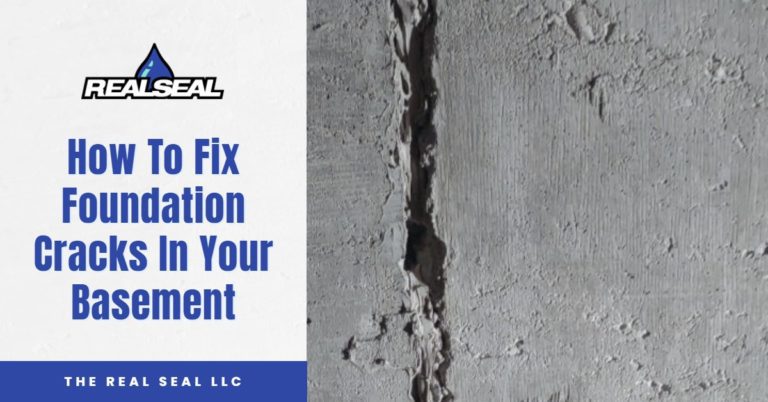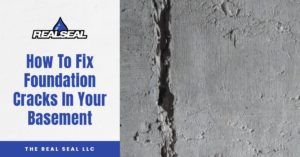If you want to know how to fix foundation cracks in your basement, you’re in the right place. This article will teach you different types of foundation cracks, different crack repair methods, and what causes foundation cracks.
How To Fix Foundation Cracks In Your Basement
There are two types of foundation cracks that could be in your basement: structural and non-structural (also called waterproofing cracks). Structural cracks require more work than non-structural cracks but don’t worry. Professionals have solutions for all of them.
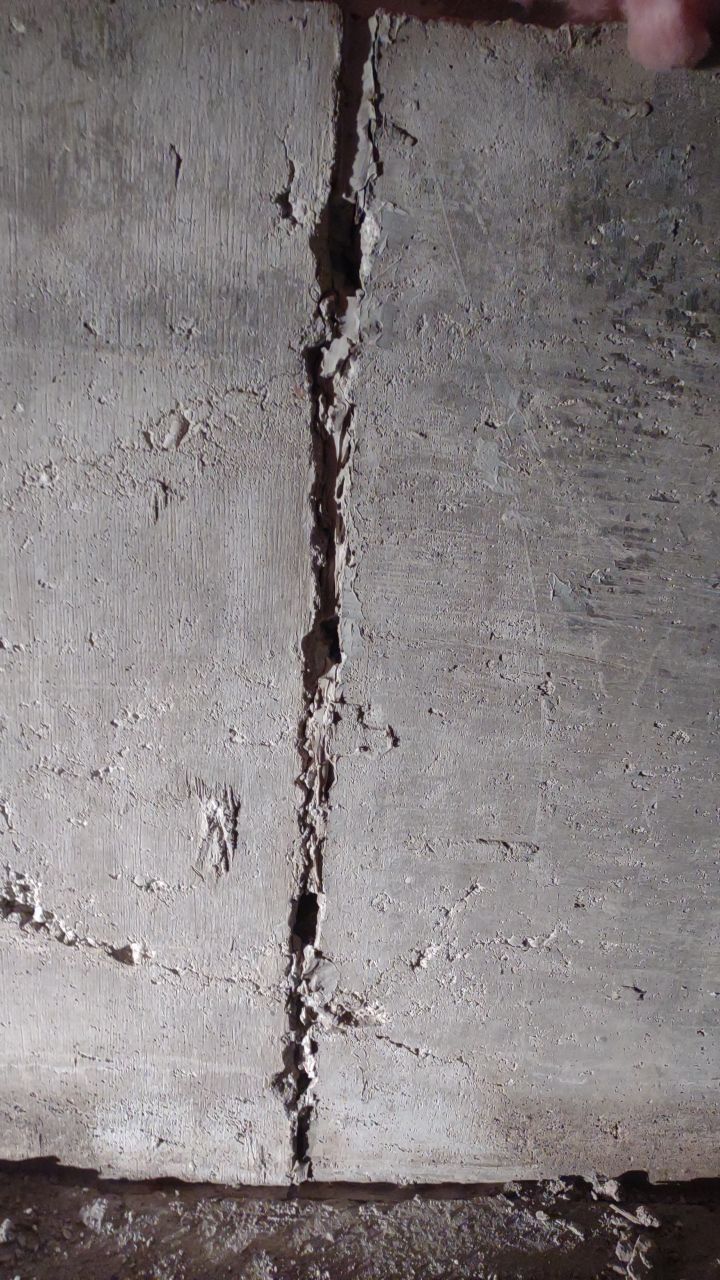
Structural Foundation Crack Repair Methods
A structural foundation crack is a crack that poses a threat to your home’s structural integrity. They can be the result of existing issues or lead to larger issues themselves. Cracks could be caused by walls that are bowing, sheering, or leaning.
Look for:
- Cracks wider than 1/10 of an inch.
- Stair-step cracks in concrete block walls or brick facia above your foundation.
- Cracks that run horizontally across your foundation wall. These cracks can be accompanied by bowing walls.
- Vertical cracks that run parallel to each other.
- Large diagonal cracks at the corners of your walls, mirrored on both sides.
- Cracks that run across your ceiling and down your walls.
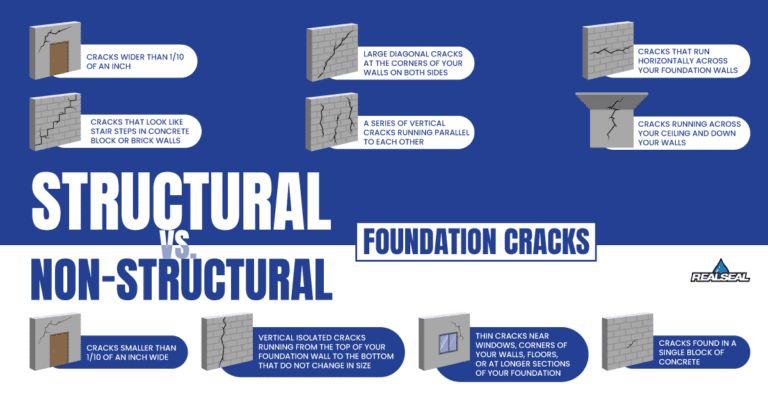
Here’s how you can repair them.
Wall Plate Anchors – If you have horizontal foundation cracks in your basement, experts will suggest using wall plate anchors to stop the bowing. Wall plate anchors use an inside wall plate, an outside anchor, and a threaded high-strength rod. The rod connects the anchor to the plate and is torqued until your wall pulls outward.
C-channel Anchors – C-channel anchors are used to correct sheering walls and help distribute the load across the entire vertical length of the basement wall. Sheering means the top of the basement wall has moved inward while the bottom part of the wall stays put. C-channel anchors use a steel beam, outside anchor, and a threaded high-strength rod. The beams are anchored to your foundation footer and are torqued, pulling your wall outward.
Fortress Invisibeam Carbon Fiber Straps – Fortress Invisibeam carbon fiber straps can be used for walls that are bowing or sheering. They can be placed vertically or horizontally, depending on the wall damage:
- A galvanized bracket is attached to the top of your house frame.
- The straps are anchored to the wall via epoxy and hundreds of epoxy rivets, creating the strongest bond in the industry.
- The straps are anchored to your foundation footer.
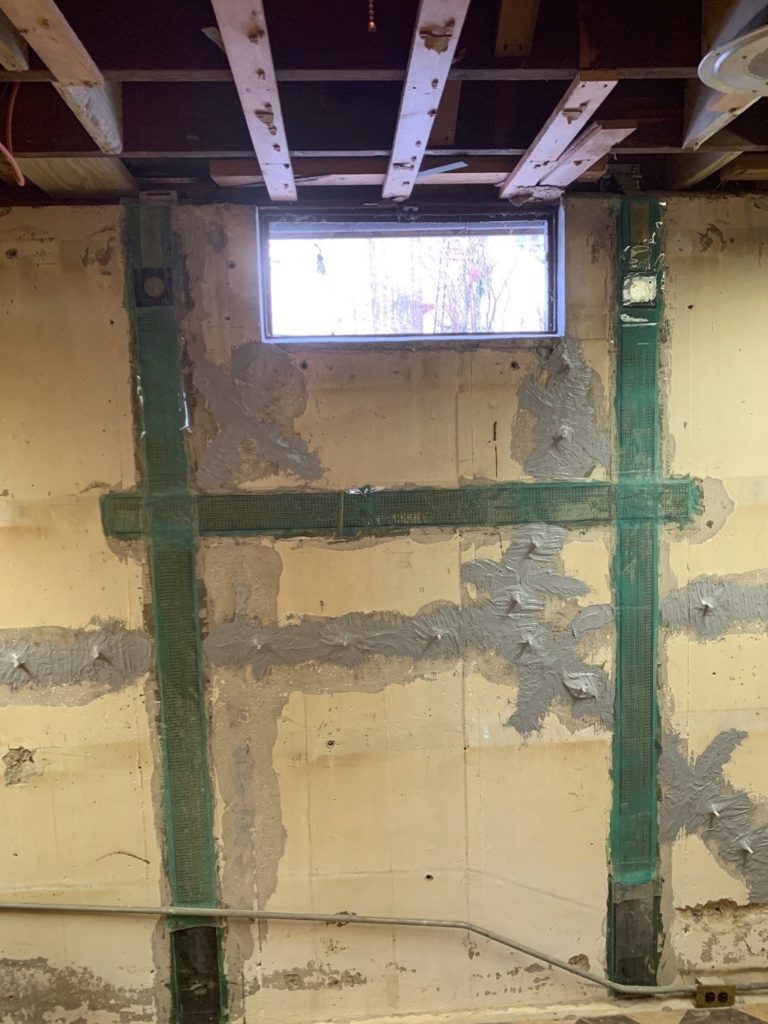
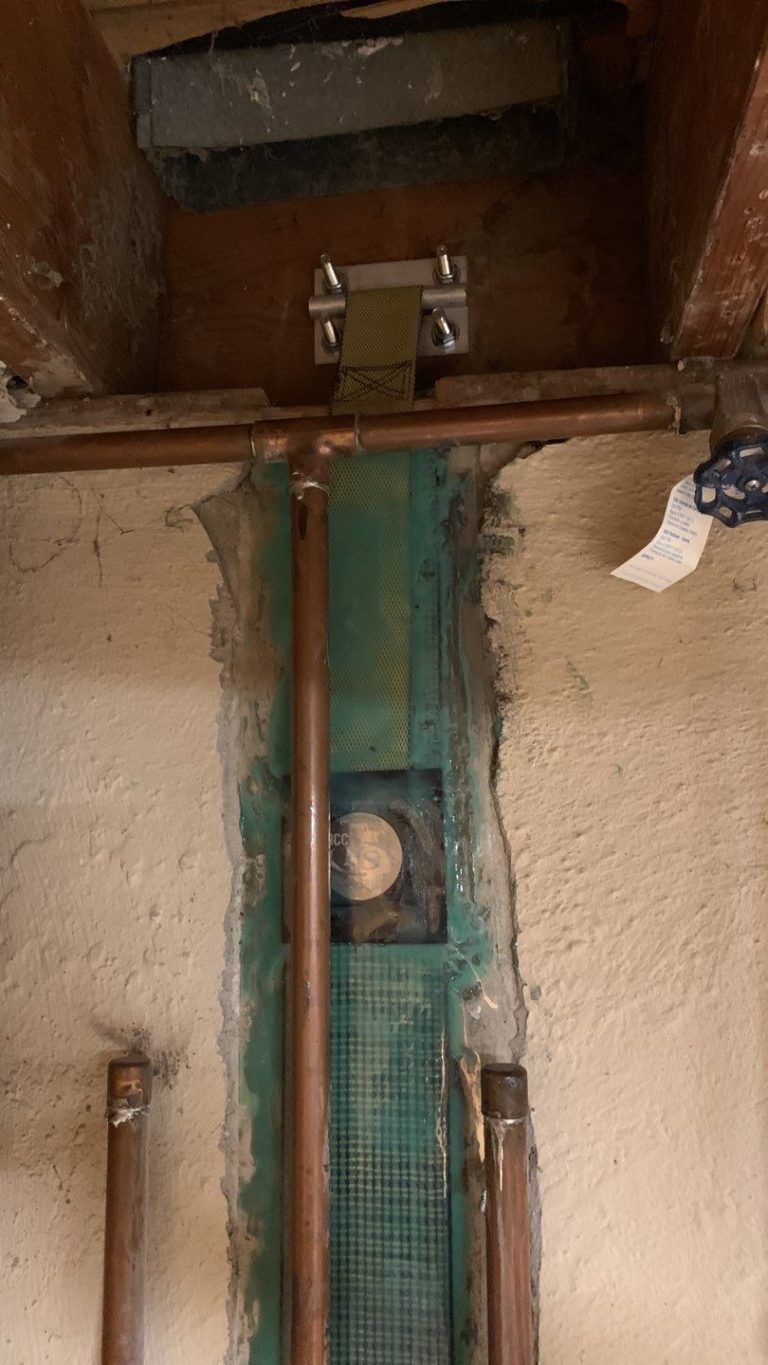
Fortress Invisibeam carbon fiber straps come with a variety of benefits.
- They can be painted over and hidden from sight.
- They are extremely strong and virtually unbreakable.
- They can be used to repair walls that have bowed or leaned inwards up to three inches. (Other straps on the market can only correct movement up to two inches).
- The warranty on Fortress Invisibeam straps is the best in the industry. The Real Seal is able to warranty that if the wall fails, they will fix it even if that means replacing the entire wall.
Steel Push Piers – Steel push piers are used to counter differential settlement or sinking foundations. If your foundation is sinking, it can cause your walls to crack, bow, sheer, or lean. Push piers are pushed deep into the soil under your foundation until they find load-bearing soil. Then, using hydraulic jacks, your foundation is lifted back to the maximum practical level (the ultimate amount of foundational lift attainable before causing structural or cosmetic damage to your home).
Helical Piers – Helical piers work a little differently than push piers. Instead of being pushed into the soil, they are twisted. After reaching load-bearing soil, hydraulic jacks lift your foundation back to the maximum practical level. Read more about push and helical piers.
Helical Tieback Anchors – Helical tieback anchors are used to repair bowing walls. The anchors are drilled from inside your basement wall. Like a corkscrew, the anchors twist and pull your wall outward. Helical tieback anchors are perfect for foundations that have limited interior or exterior access. It’s important to note that The Real Seal does not offer helical tieback anchors.
Non-structural Foundation Crack Repair Methods
A non-structural foundation crack is a crack that does not pose a threat to your home’s structural integrity. Experts call these “waterproofing” cracks because even though they aren’t a structural problem, they can still allow water to seep into your basement.
- Cracks smaller than 1/10 of an inch wide.
- Isolated vertical cracks that run from the top of your foundation wall down to the bottom.
- Cracks that don’t change in size.
- Cracks found in a single block of concrete or brick.
- Thin cracks near windows, wall corners, floors, below I-beams, or at longer sections of your basement.
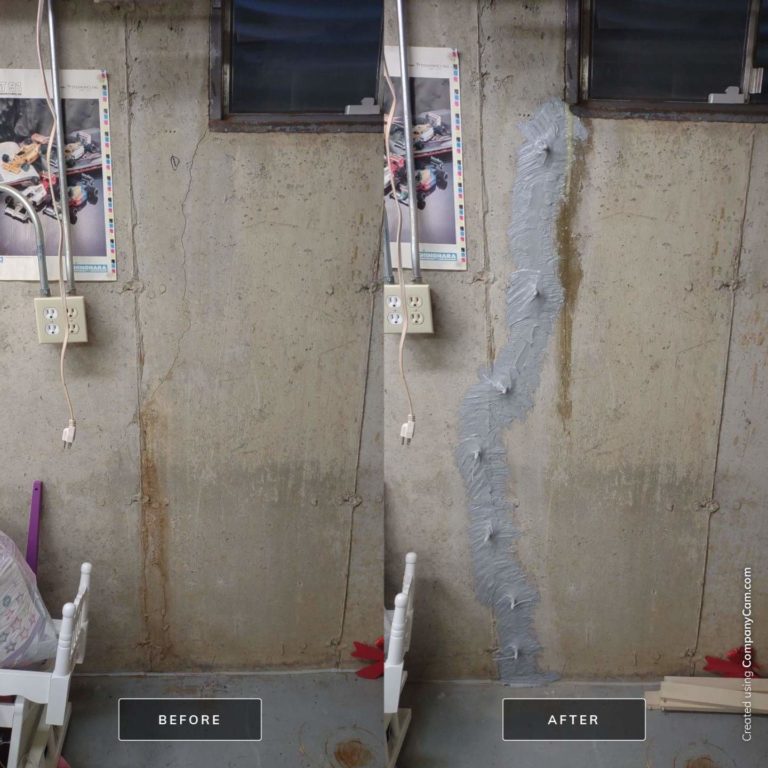
Epoxy Crack Injection – Whether your cracks are structural or non-structural, professionals recommend sealing them using an epoxy injection. First, a surface patch is created using an epoxy bonding solution. Then, the cracks are injected with a 2-part epoxy that waterproofs and reinforces your foundation wall.
Carbon Fiber Staples – Carbon fiber staples are also used for structural and non-structural cracks. The staples are inserted along the crack into grinded slots. Then, they are fused into the concrete using a high-strength epoxy.
What Causes Foundation Cracks In Your Basement
First, let’s start with what causes structural cracks.
Structural cracks are caused by:
Differential Settlement – When a home is first built, it will slightly settle into the soil beneath it in a process called uniform settlement. Differential settlement is when sections of your home settle at different rates. This can cause your foundation walls to crack, bow, lean, or sheer.
Expansive Soil – Expansive soil is soil that grows and shrinks based on moisture content. When the soil absorbs water, it expands. Then, when the soil dries, it shrinks. This growing-shrinking cycle places stress on the outside of your foundation walls and can cause them to crack.
Hydrostatic Pressure – Hydrostatic pressure is when the soil volume outside your foundation walls increases. This happens when water pools up and you don’t have a proper drainage system to collect and carry the water away. As the volume of the soil increases, it exerts pressure on your walls and can cause them to crack.
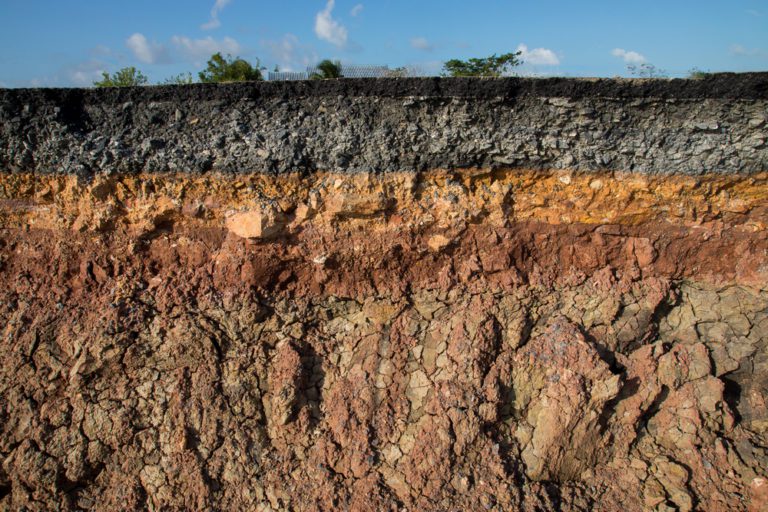
Frost-heaving – Frost-heaving is when the soil outside your foundation freezes, causing it to rise. Then, when the soil thaws, it settles back down. The up-and-down movement can cause your walls to crack, bow, lean, or sheer.
Lateral pressure – If a heavy object, such as a dump truck is parked alongside your home, your foundation walls could crack, bow, lean, or sheer.
Non-structural cracks are caused by:
Concrete Shrinkage – Concrete shrinkage is when a poured foundation dries too quickly. This can cause the concrete to shrink and develop hairline cracks.
Aging – Over time, foundations can form thin cracks simply due to aging. Foundation cracks formed by aging are usually smaller than 1/10 of an inch wide. Anything larger could be a structural crack.
Who Can Fix Foundation Cracks In Your Basement?
If you live in the Greater Chicago area and have foundation cracks in your basement, call The Real Seal. We’ll get you started with an in-depth inspection, free repair estimate, and a list of our finest solutions. We also provide basement waterproofing, crawl space encapsulation, crawl space repair, concrete leveling, and more. Foundation cracks are serious! Call today.
